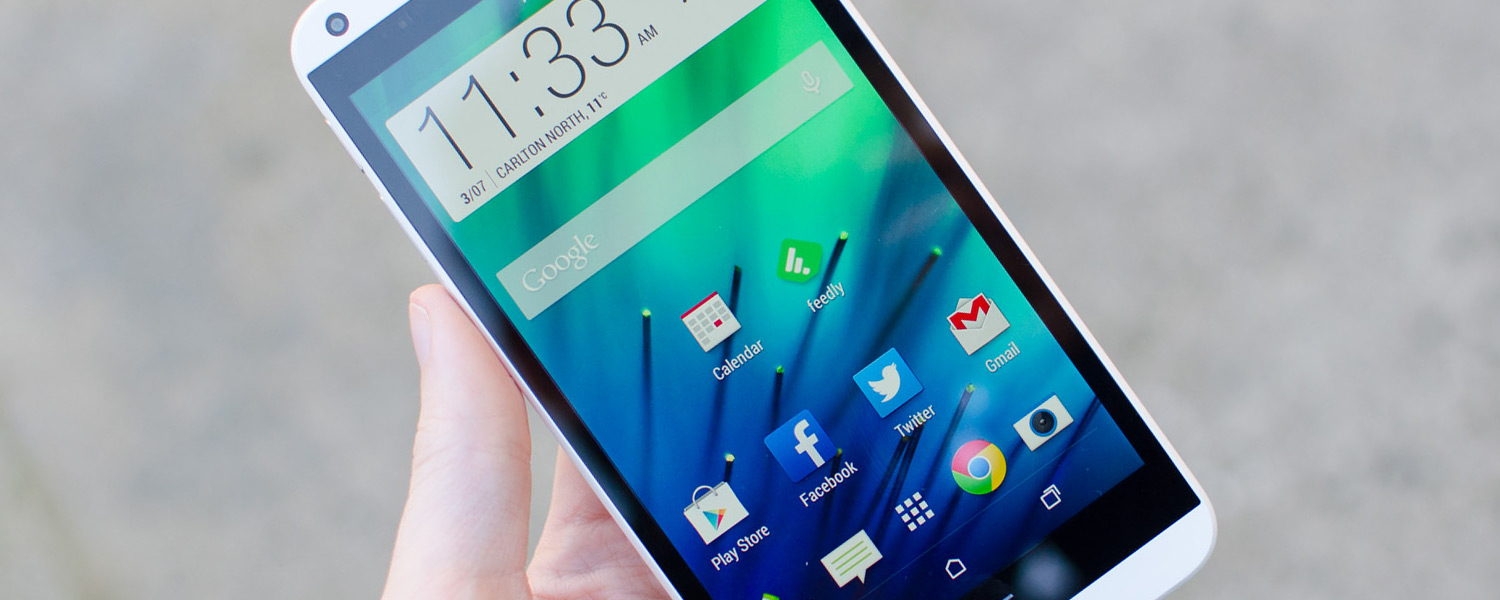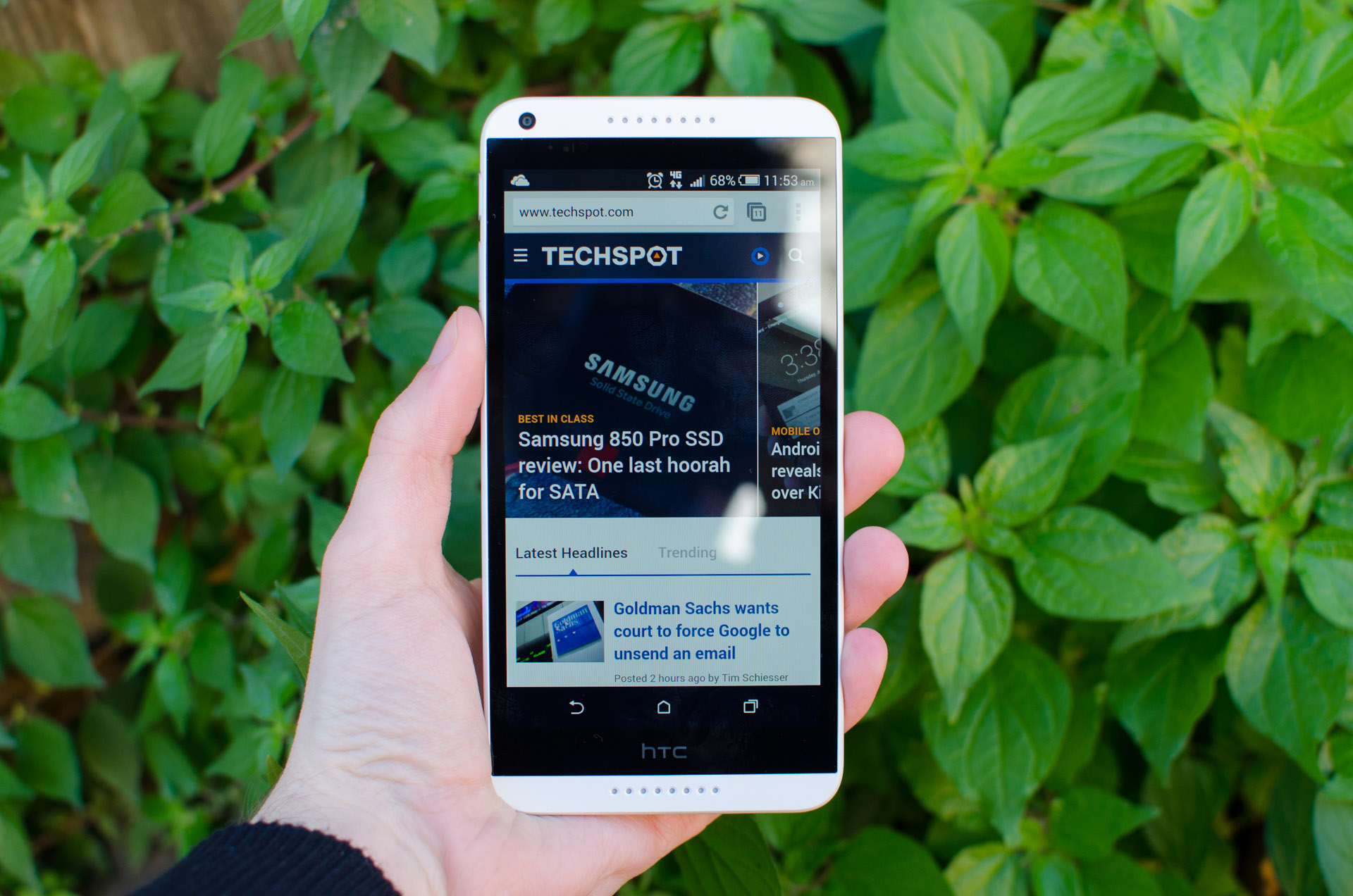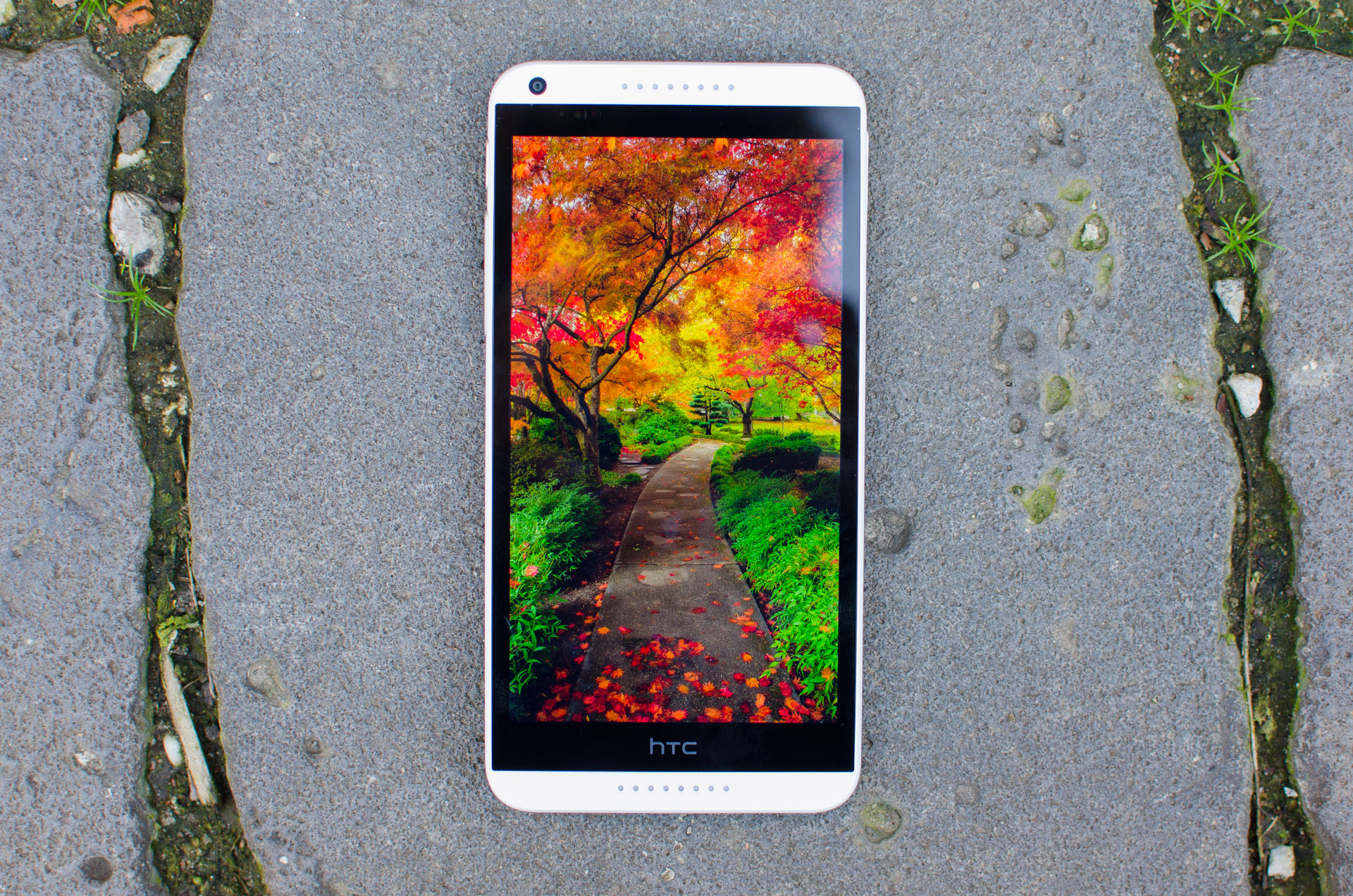Since the launch of the first successful large-screened smartphone back in 2011, the Samsung Galaxy Note, there has been a growing demand for devices with larger-than-normal displays. Samsung's line of Notes has been a big seller for the Korean giant, but other companies such as Nokia, LG, Sony, Huawei, Asus and even HTC have also been jumping in on the party.
HTC Desire 816 - $325 unlocked
- 5.5", 1280 x 720 IPS LCD display (267 ppi)
- Qualcomm Snapdragon 400 SoC
- 1.6 GHz quad-core CPU, Adreno 305 GPU, 1.5GB RAM
- 8 GB internal storage, microSD card slot
- 13 MP camera, 1/3.06" sensor, f/2.2 lens, 1080p video
- 2,600 mAh, 9.88 Wh battery
- LTE, Wi-Fi b/g/n, Bluetooth 4.0
- Android 4.4 'KitKat'
- 165 grams, 8.1mm thick
The Galaxy Note products tend to be in the very upper echelon when it comes to smartphone pricing, so naturally not everyone is willing to fork out the cash required for such a premium device. This creates space for a market of mid-range handsets with large displays, exactly where HTC's new product - the unimaginatively named Desire 816 - fits right in.
The HTC Desire 816's main feature is the large 5.5-inch HD display, and it also packs in a Qualcomm Snapdragon 400 SoC, a 13-megapixel camera (no Ultrapixel sensor here), and design cues from HTC's recent high-end products. All of this is available for just $325, placing it squarely in the affordable territory of the Nokia Lumia 1320, Asus Zenfone 6 and older products like the Samsung Galaxy Mega 5.8.
Some of HTC's previous mid-range products haven't been as attractive as they seem on paper, however in 2014 the company has majorly stepped up its game to offer better devices at better price points. Let's hope the Desire 816 is one of these products.
Design
I really like the style HTC has used for the Desire 816. The rounded plastic slab looks particularly good in white with its contrasting black bezel, while the dotted BoomSound speakers and large silver buttons give some flair to the design. I would have liked to see the back panel use the same matte finish as the edges. Luckily it's not the side of the handset you'll be looking at most.
Despite the phone actually looking nice, when you get it in your hands you might notice some strange design decisions. The most notable and most annoying is the power button placement on the upper left edge of the handset, which is only really suited to people using the device in their left hand. For right-handers like me, attempting to power on the Desire 816 while holding it in one hand is quite a stretch.
The button placement is a slight improvement on HTC's typical choice of placing it on the top edge, but I wish they would take note of what other manufacturers choose and place it in a more ergonomic position. Midway down the right or left sides would be perfect for a smartphone of this size.
The size of the HTC Desire 816 is much larger than necessary, due to the sizable bezel around the display. The 5.5-inch device is actually 5mm taller than the 5.7-inch Samsung Galaxy Note 3, and is the same width, with display coverage of just 68% compared to the Note 3's 75%.
I'm not too concerned about the width of the handset, as it's still manageable, but the unnecessary height makes the Desire 816 a little too cumbersome for my liking. Most of the extra height comes from two black panes above and below the display: the top one only contains a small sensor array, while the bottom one is just used for branding (like the HTC One M8). Remove these two panels and integrate the components into other areas and suddenly the phone is the perfect size.
For all the good work HTC has done in styling the Desire 816, however large the handset may have turned out, the build quality lets the final product down. The polycarbonate used for the sides of the device and the glass protecting the display both feel very nice in your hands, but the glossy cheap plastic that makes up the back panel is anything but quality.
Reminiscent of some of Samsung's past flagships, the glossy back panel is slippery and quickly becomes greasy. It also completely ruins the aesthetics of the device transitioning from a premium-style plastic around the edges to glossy rubbish on the back.
Furthermore, HTC hasn't joined the back panel onto the rest of the device properly, leaving a small gap around the plastic that gives an illusion that it's removable. In some places - particularly around the camera module and flash - the back audibly creaks when light pressure is applied, which is not something I want to hear from what should be a well-constructed phone.
Instead of having the back panel come off, a small flap on the upper right edge reveals the nano-SIM and microSD card slots. If you end up getting a dual-SIM model you'll find both SIM ports are available to you, but in the model I received from HTC Australia, only one SIM slot was available for use, despite there clearly being a spot for another one. It will come as no surprise that the micro-USB port is on the bottom edge and the 3.5mm audio jack is on the top.
At 8.1mm thick at its thickest point, as well as 165 grams heavy, the Desire 816 is fairly slim and light for its footprint. Unfortunately it isn't helped by being too large in terms of vertical height, but its slimness should keep it from being a massive brick.
Display
For a device like the Desire 816, the display is one of the key selling points. However, as we are dealing with a mid-range device, we're not getting the latest and greatest display technology, which is completely understandable.
In the Desire 816, HTC has included a 5.5-inch TFT IPS 'Super LCD 2' panel with a resolution of 1280 x 720, equating to a pixel density of 267 PPI. The last time we saw a Super LCD 2 panel in a flagship HTC smartphone was 2012's One X, so it's not surprising to see the technology filter down to the mainstream market in 2014.
There's a lot to like about the 5.5-inch Super LCD 2 in the Desire 816, even if it's not the latest and greatest going around. One such aspect is the color quality, which has always been a key aspect of the Super LCD line. The display on the 816 is well saturated and has a decent level of contrast, making images look vibrant, accurate and generally excellent.
The panel is seated close to the protective glass, and generally speaking the viewing angles are good, although there is a small reduction in perceivable brightness when viewing at off-normal angles. The Desire 816's display is also easily viewable outdoors thanks to the way the IPS panel is constructed, which reduces reflections, as well as the bright backlight.
Obviously the sharpness of this 720p panel isn't going to match the same sharpness levels achieved with a 1080p display, but nevertheless there's little to complain about. Some devices in this price bracket and device category released last year (and even this year) use mediocre 960 x 540 panels, which can't really compete with a true HD panel where it counts.
Images and text generally look crisp on the 5.5-inch panel, with its pixel density of 267 PPI providing a level of clarity that's more than acceptable at this price point. There's also the added bonus of requiring less processing power to render graphics, which can improve performance and battery life.












